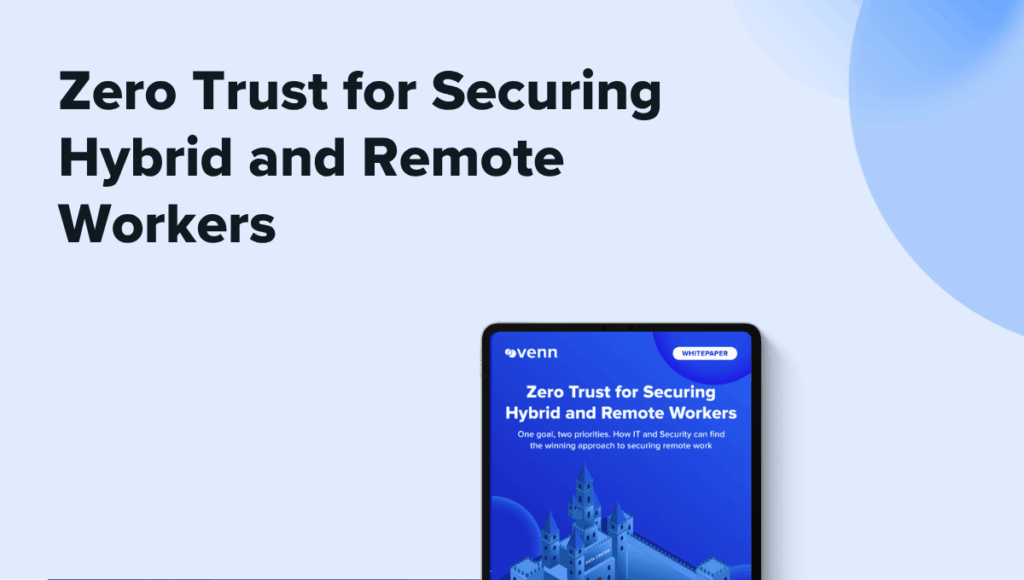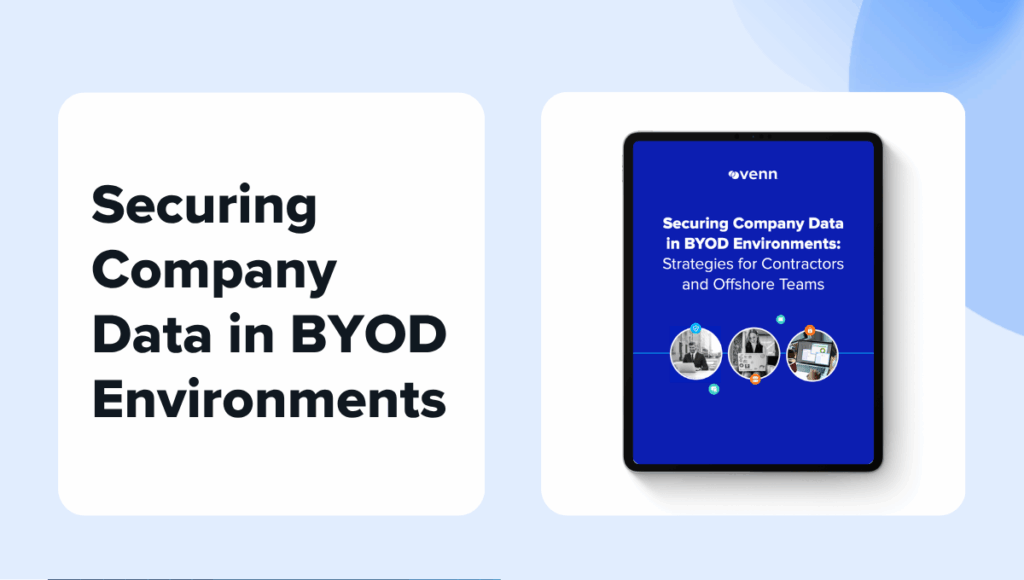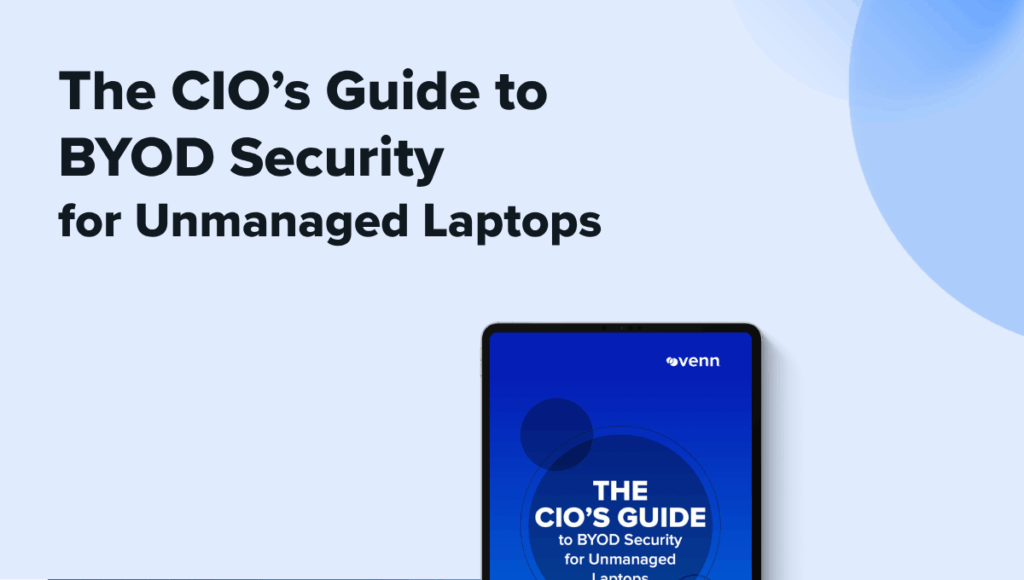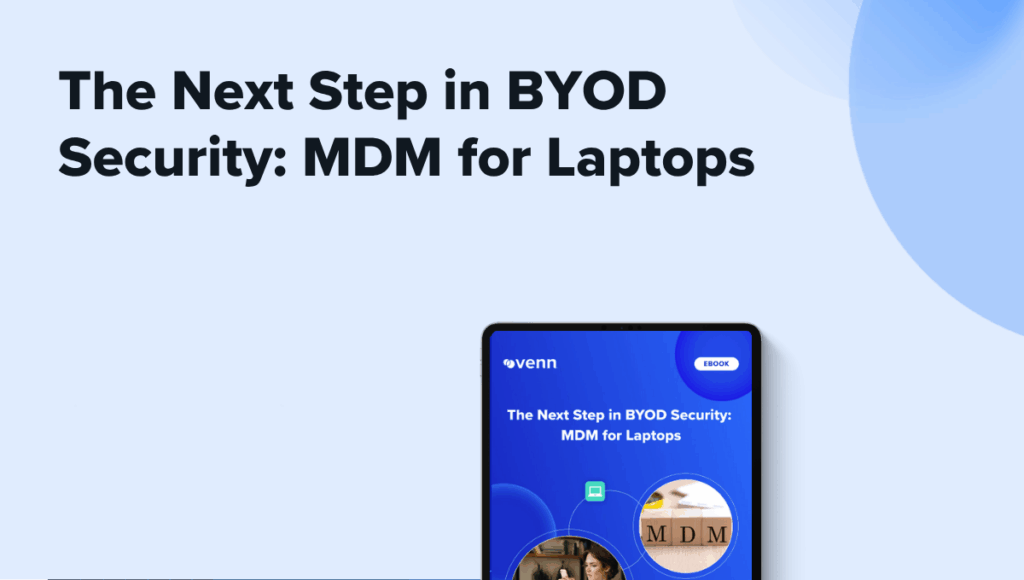Zero Trust for Securing BYO Computers for Hybrid & Remote Workers
Whitepaper

One goal, two priorities. How IT and Security teams can find the winning approach for securing remote work on unmanaged or BYOD computers, and embrace principles of Zero Trust
In this Whitepaper, you will learn about:
- Challenges of securing remote workers on managed & unmanaged PCs
- How the modern enterprise gets connected and secured
- What technologies can be used to secure remote workers
- A new approach to Secure BYO-PC
Securing remote work doesn’t have to be complicated
Compliance with Industry Standards
Venn ensures compliance with all current cybersecurity regulations which require development and implementation of mandatory policies, principles, standards and guidelines.
Download Whitepaper
More Whitepapers
Securing Company Data in BYOD Environments: Strategies for Contractors and Offshore Teams


Whitepaper
Securing Company Data in BYOD Environments: Strategies for Contractors and Offshore Teams
Organizations are leveraging more contractors and offshore workers than ever before, but existing security models were only built to support in-house employees. How can organizations secure these new remote workers on BYOD laptops? In this eBook, you will learn: Download to find out how you can secure company data on BYOD without VDI or locking […]
The CIO’s Guide to BYOD Security for Unmanaged Laptops


Whitepaper
The CIO’s Guide to BYOD Security for Unmanaged Laptops
BYOD workforces unlock flexibility and efficiency for businesses and employees, but they also introduce unique challenges. In this eBook, you will discover: BYOD workforces are here, and organizations that proactively embrace this shift can not only reduce security risks but also gain a competitive edge. Stay ahead of the curve and unlock the full potential […]
The Next Step in BYOD Security: MDM for Laptops


Whitepaper
The Next Step in BYOD Security: MDM for Laptops
With increasingly remote workforces, device flexibility and security are vital. But the cost of buying, managing, and shipping company-owned devices around the globe is a burden. The solution? MDM for laptops. In this ebook we will explore: Download now to learn how you can embrace secure BYOD workforces with Venn’s MDM for laptops solution.